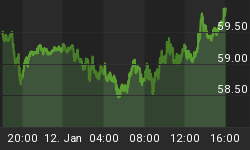(Econotech FHPN)--At the risk of writing too frequently, I think the current investment environment merits more rapid updates than I usually do.
Two Potentially Critical Blind Spots For Global Equity Investors
I would like to make two key points that I think are not as widely understand as need to be right now.
First, at certain critical inflection points, there is not a linear, one-to-one relationship between rising interest rates and rising market risk. Rather at some point, rising interest rates might more rapidly move global markets downward, I used the analogy of cracked ice (investor psychology) giving way in my June 4 article link.
I.e., if interest rates continue to rise, especially with the 10-year bond yield now over 5%, things may get rather more risky rather more quickly than overly complacent global financial markets still currently expect, again especially due to the fact that global markets are so highly dependent in the 2002-07 cycle on very leveraged m&a and lbo deals and emerging market debt, and because of the weak state of the mortgage market.
Second, another critical point that I would like to re-emphasize is the lack of transparency for American equity investors, including professional, of both the leveraged debt markets and debt and equity emerging markets.
Again using the analogy of subsurface cracks in the ice, almost all equity investors, professional and gurus included, simply are not well-equipped to see leveraged debt and emerging market cracks in the ice of global investor and business psychology, that's one of the key things that makes the 2002-07 investment cycle so different.
To put it as bluntly as possible, most professional equity investors, even very incredibly successful ones, have very little actual, real-time working knowledge of what is really happening in these two critical markets, leveraged debt and emerging markets, and may be very surprised by events in them.
Despite Market Uptrend, Alpha Weakening for Key Sectors
I've previously noted that alpha, risk-adjusted excess return, of EEM, the MSCI emerging markets etf, has been coming down to near zero, and how this might trigger a flight of momentum money should the bullish psychology on/off switch suddenly flip. (See my May 24 "When Greenspan Talks, Do People Still Listen? link)
Similarly, here is 4-year weekly chart of another critical sector, $XBD, U.S. broker-dealer stocks, courtesy of prophet.net (left click once to enlarge for better viewing).
Note that its alpha, bottom panel, is negative. Since the global economy now often seems to be run for the benefit of the Goldman Sachs' of the world, this negative alpha wouldn't seem to bode too well, and rising interest rates usually doesn't help the record-setting deal flow that drives this sector.

If Current Uptrend Might Be in Jeopardy, Which Timeframe Are We Talking About?
Whenever Wall Street, the mainsream media, experts, etc talk about uptrends, they often fail to note what timeframe they are talking about.
Right now there are at least 3 "current uptrends," from most to least important: the long-term, from the Oct 2002/Mar 2003 lows; the intermediate-term, from the Jun-Jul 2006 lows; and the short-term, from the Feb 27 2007 lows.
The practical investment/trading problem is that no one knows, of course, if the short-term uptrend ends, whether it will stop there, and that the intermediate and longer-term ones will not in turn subsequently end.
My concern is that, on the charts I use, key markets are at the top or even above their regression channels in more than one timeframe, e.g., as I've previously shown (see my May 31 "Brief Update," link), with XLB, the materials sector etf, a key beneficiary of the huge growth in emerging markets.
That overextended, increasingly risky situation needs to be taken into account right now, though I consistently have given the benefit of the doubt to the current uptrends staying intact until clearly broken, and even though global liquidity and a record-setting global m&a deal binge have been propping up global markets.















